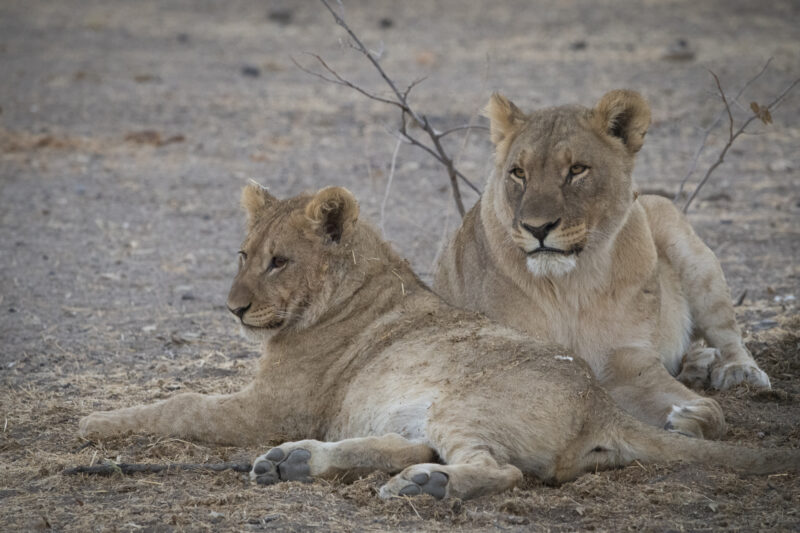Road trip through Namibia - Etosha National Park
It's finally time for an adventurous African safari in and around Etosha. From the exclusive Ongava Game Reserve we observe busy waterholes, search for big game with an experienced ranger and track white and black rhino on foot.
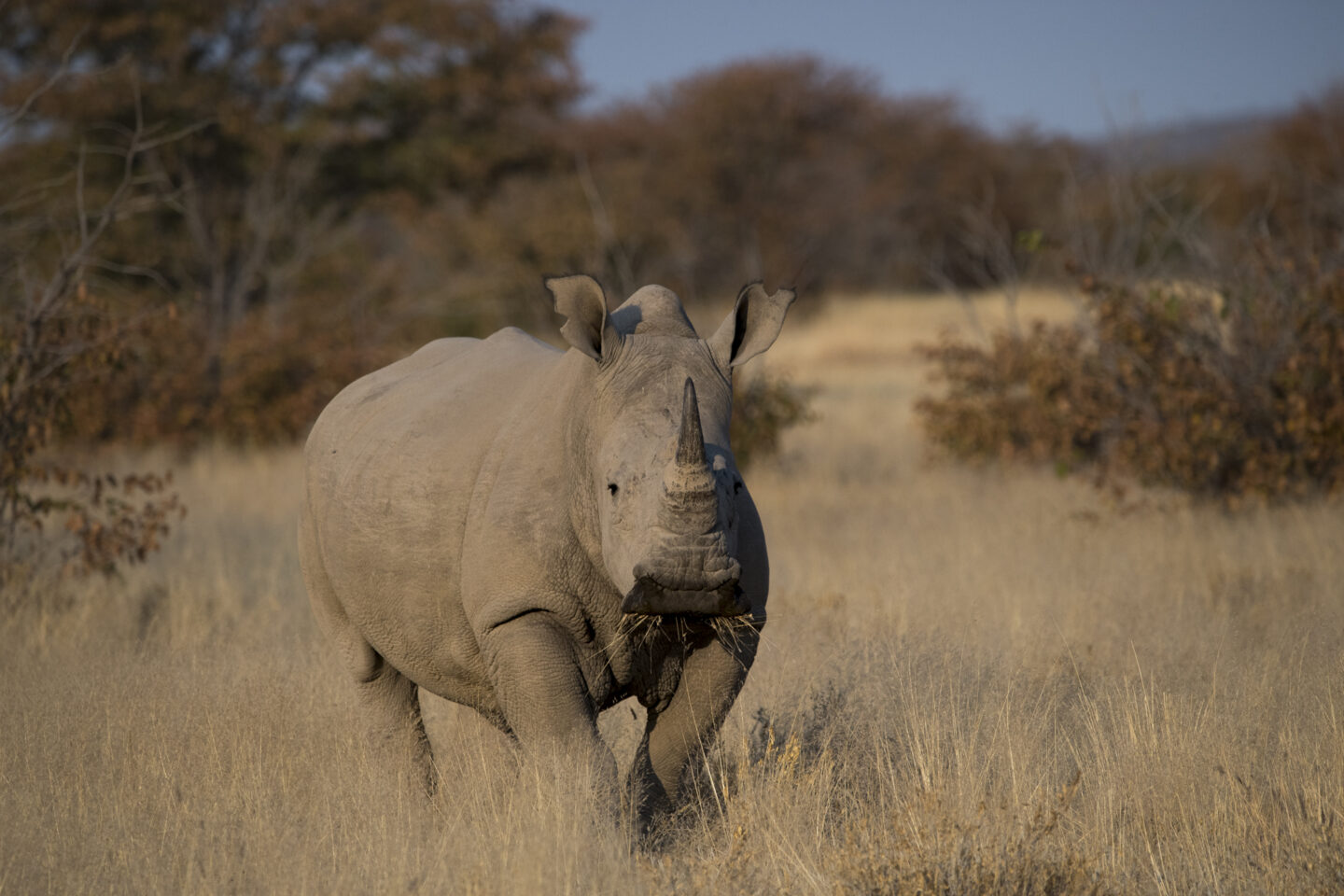
Etosha National Park, one of Africa's largest game parks
Etosha National Park was declared Namibia's first national park in 1907. Initially, Etosha covered an area of more than one hundred thousand square kilometers and was the largest game park in the world. Many indigenous tribes were displaced from their ancestral lands, leading to internal tensions. Forty years later, the area was reduced to its present size of twenty thousand square kilometers.
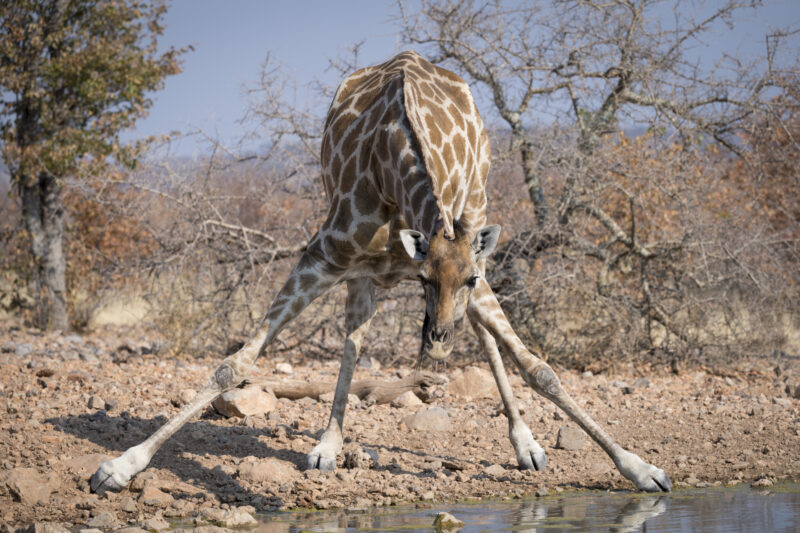
Etosha pan
Etosha, which means place of dry water, surrounds the centrally located Etosha Pan. The area is a vast, inhospitable salt flat that covers a quarter of the total area of the national park. The Etosha Pan is almost always dry, except after short but very good rains, sometimes lasting only a few days a year. The water is enough to stimulate the development of algae and turn the pan into a lush area full of life. For the Walvis Bay flamingos, the short breeding season has arrived and they descend on the Etosha plain by the thousands. At other times of the year the Etosha Pan is dry and desolate. The silver-white salt flats glisten relentlessly in the hot midday sun and offer a fantastic spectacle of mirages.
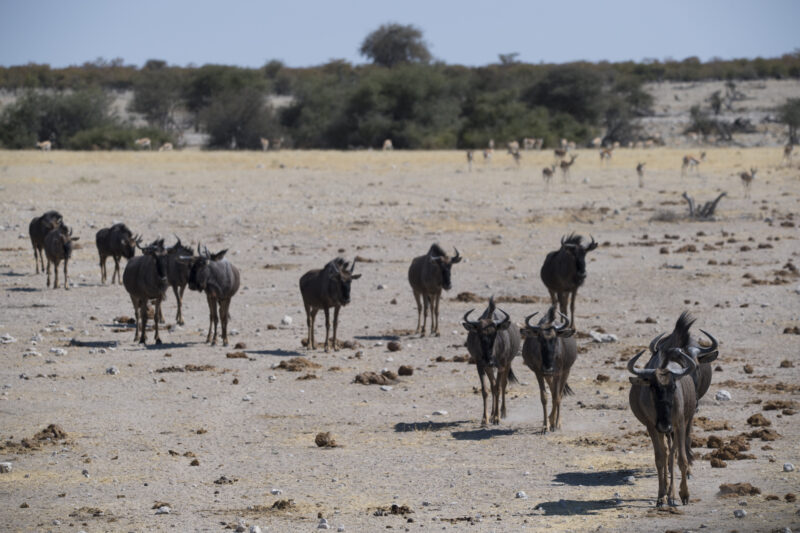
Wildlife abounds
Etosha National Park is teeming with wildlife. More than 114 species of mammals and 380 species of birds can be found in the area. The most popular big game species are giraffe, African elephant, wildebeest, zebra, a variety of antelope and predators such as lion and leopard. The endangered white and black rhinos and black-headed impala also live in the national park.
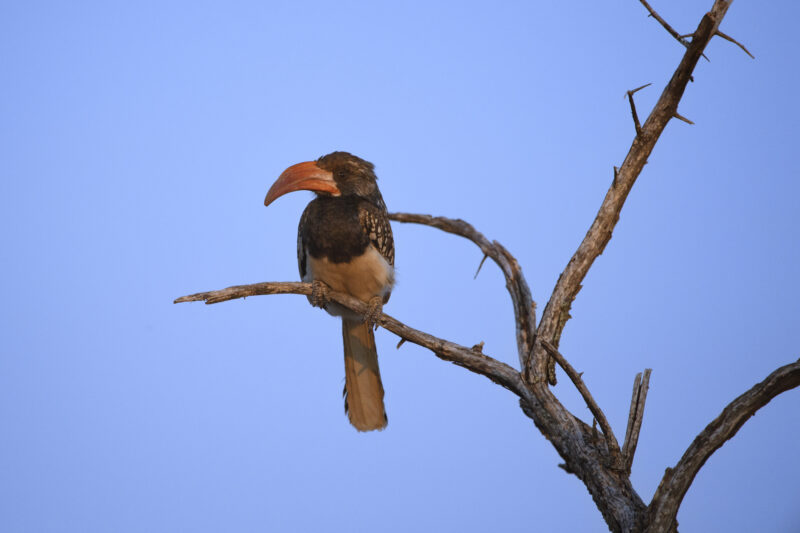
Etosha National Park, an accessible area
Despite its size, only the southern part of Etosha is freely accessible to tourists. But this is more than enough to satisfy even the most discerning traveler. Wildlife concentrates daily around the many waterholes, which are mainly located on the southern edge of the Etosha pan. Sunrise and sunset are the busiest times and thanks to the extensive road network, you will have the opportunity to observe wildlife up close. Be careful as the park closes after dark.
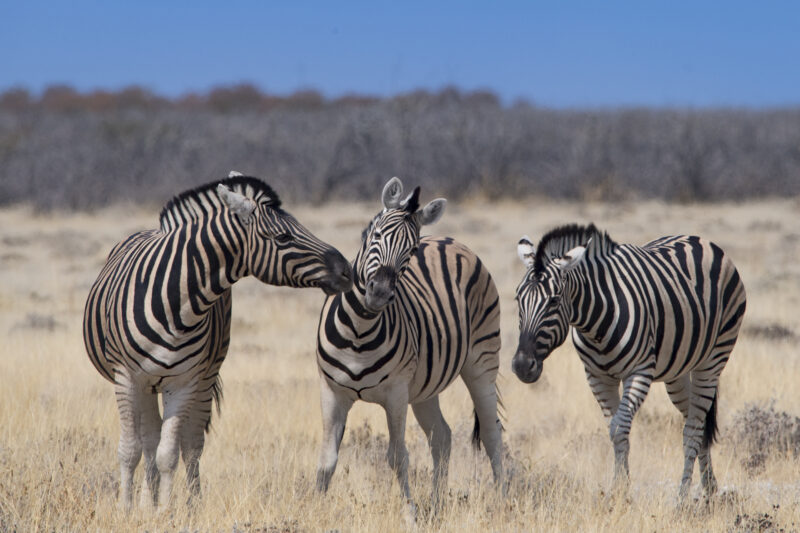
The zebra crossing
Game viewing in Etosha is really not a challenge. We immediately encounter a group of impala and red hartebeest, so called because their horns form a heart when you look straight at them. We come to the edge of the Etosha Pan where several dozen zebra, wildebeest and springbok are moving slowly. A few oryx stop and turn their heads in typical fashion, posing for a photo. Willy, our guide from the neighboring Ongava Reserve, takes us to a strip of land known as the zebra crossing. More than 50 zebras slowly cross the road in a row. In the distance another group is approaching. The zebra crossing leads a short distance to a waterhole. The drinking place was built by the government to promote game viewing in this sector of Etosha. The view is breathtaking. Masses of zebra are drumming in the water and more than a hundred springbok are running around.
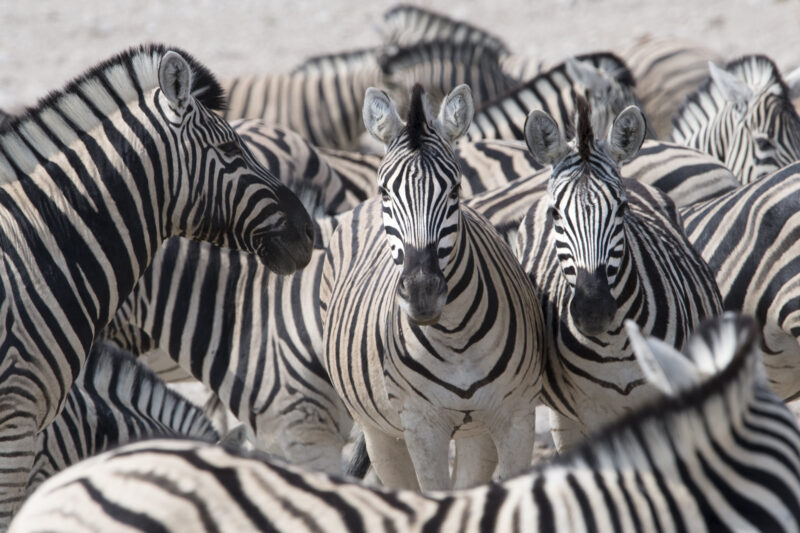
One zebra kicks its neighbor, who starts braying like a donkey. It is unbelievable how many animals gather around this spot and I wonder if I am dreaming. Game is constantly coming and going and I imagine a lion would be having a feast here.
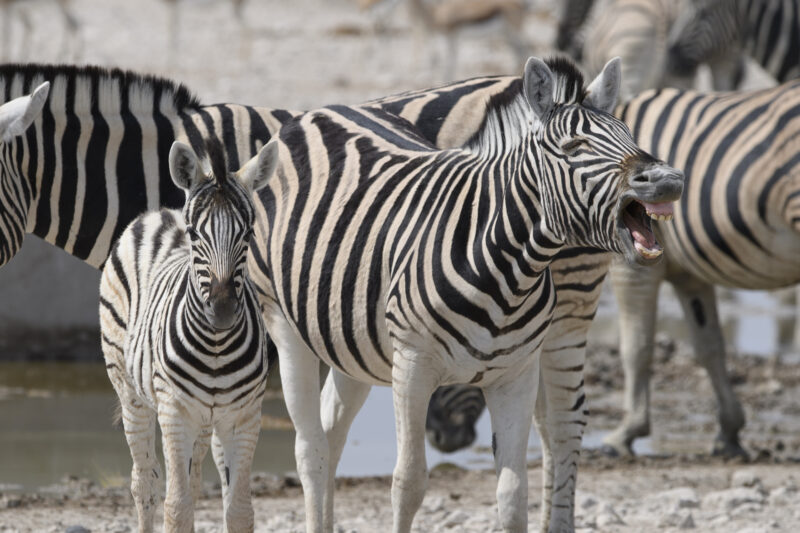
Ongava Private Game Reserve
Ongava is a private reserve bordering Etosha National Park. In 1991, four unproductive cattle ranches were transformed into a thirty thousand hectare reserve. Large concentrations of wildlife roam freely in this protected area. You can see lions, wildebeest, giraffes, elephants and a variety of antelope species including the unique impala. Ongava Game Reserve is also known for the successful reintroduction of black and white rhinos.
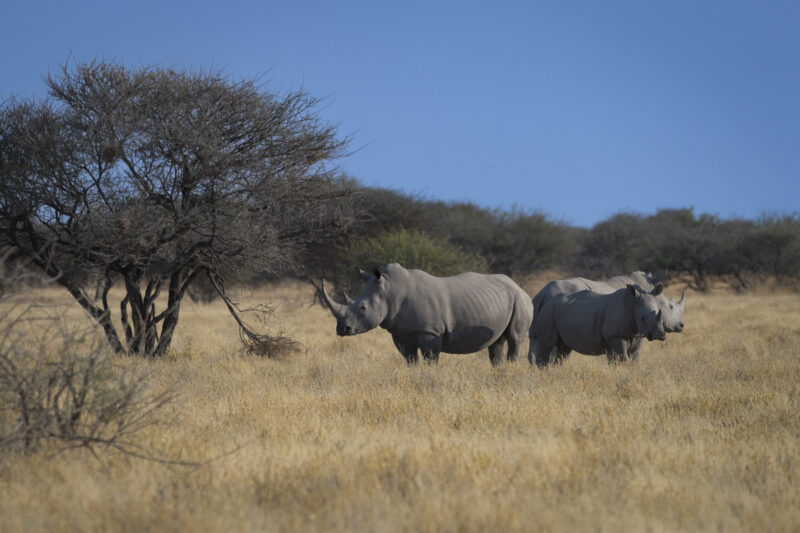
Little Ongava, an intimate safari lodge
With only three suites, Little Ongava is an intimate safari lodge in every sense of the word. The luxurious suites are perched on a hilltop with stunning views of the surrounding savannah. The lounge and dining room overlook a busy watering hole. During meals there is often excitement as big game visit the waterhole. Little Ongava is a home away from home. We are pampered by manager Nicci and go on game drives with experienced tracker Willy.
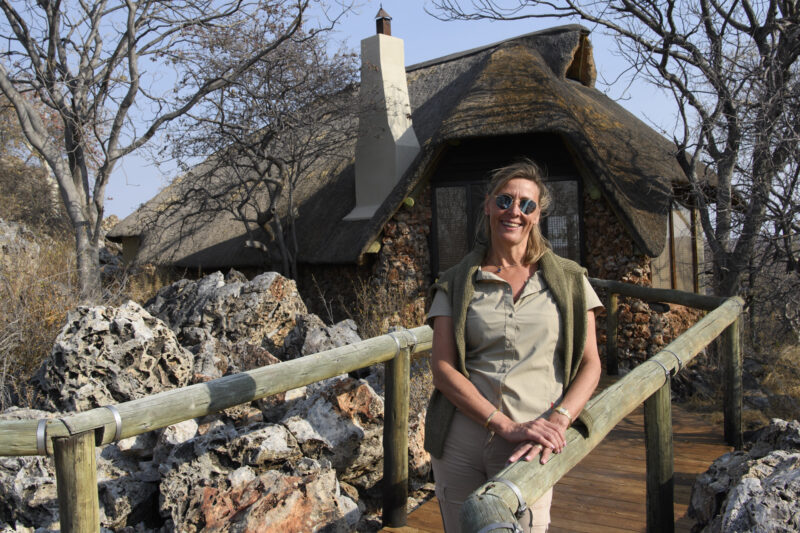
Our suite is a beautiful wooden chalet with a thatched roof. There is a lovely sitting area with library and fireplace and windows opening onto a wooden deck. Double sliding doors lead to a romantic bedroom with a large four poster bed and dressing room. The plunge pool on the adjacent terrace overlooks the savannah. The walls of the spacious bathroom are all glass. A door leads through a wooden walkway to a covered patio with lounging cushions. The whole place is decorated in a very comfortable African style. Nicci lets us recover from our surprise and invites us to be ready for the first game drive in an hour. The thermometer reads 31 degrees, a welcome change from the cold wind of the Namib Desert.
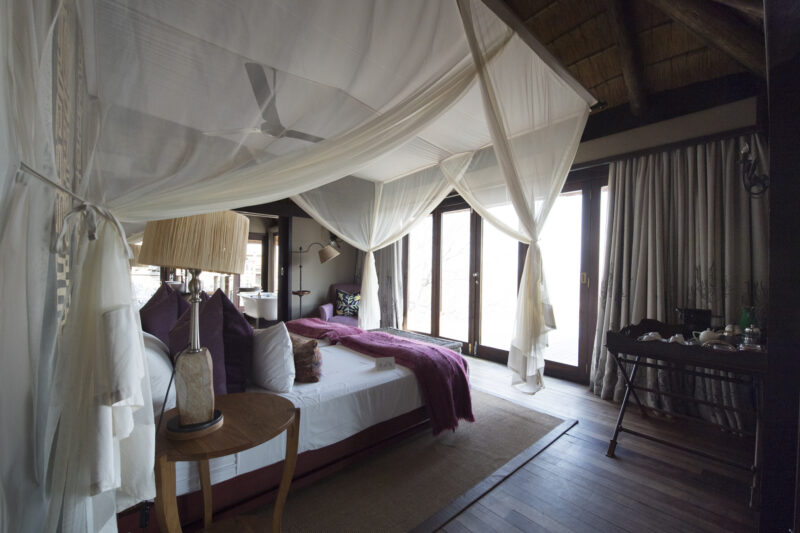
The first game drive
Willy takes us on our first game drive in Ongava and after a few minutes we see several species of antelope. We see springbok and kudu, some with the rare white dorsal stripe. There are also black-headed impala and hairy waterbuck. We pass a lone wildebeest before suddenly seeing two massive elephants in front of us. These are the common African elephants and they are much larger than the desert elephants we saw in Damaraland. Further on, a troop of baboons is performing their hygiene ritual and the young ones are playing in the trees. We continue our drive in search of rhinos and lions. After 15 minutes we come across two giraffes and some kudus. They make a soft roaring sound, a call to their kind to signal the proximity of a predator. Willy looks hopefully for lion tracks but finds none. The rhinos also seem to be playing hide and seek with us tonight. It’s getting dark and we return to the lodge.
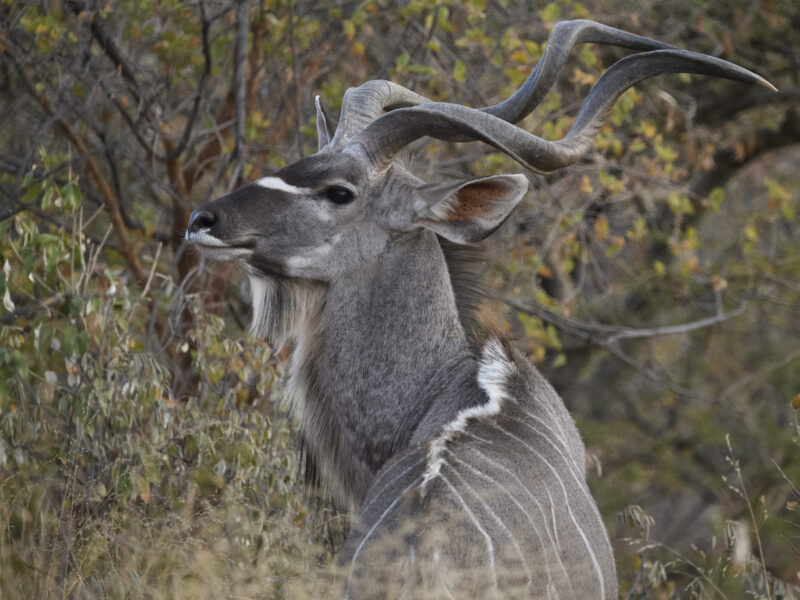
Hustle and bustle around the waterhole
We go to the lounge for dinner. From the beautifully set table we look out over the waterhole, which is illuminated by an orange-red light. Suddenly there is excitement because there are three black rhinos at the waterhole. We can't believe our eyes. No tracker had spotted a lion or rhino all night and now they were right in front of us. The black rhino is a very aggressive animal and we witness a roaring fight. The animals eventually leave the waterhole and we return to the table. During the main course four white rhinos come to the waterhole. Our luck is hard to beat.
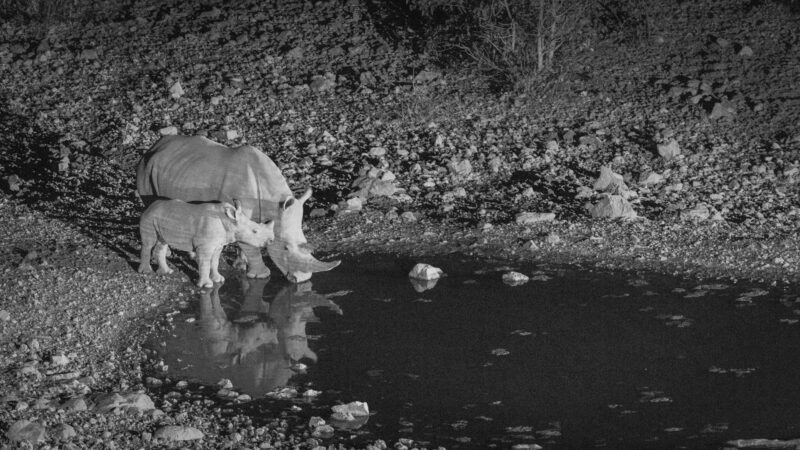
Rhino tracking on foot
We set out early in the morning to look for rhinos. If we find them we will continue on foot and try to get closer to them.
Willy sees a pile of dung and steps out to examine it. It is fresh and belongs to a black rhino. We don't find the animal, but a little further on we come across a white rhino with her calf standing just off the road. The mother startles, looks at us and takes off running. The baby is a newborn and Willy tells us that we are the first ones to see it.
White or black rhino. What is the difference?
The difference between a white rhino and a black rhino is not the color of their skin, which is very similar. Rather, it is the morphology that characterizes the species. The white rhino has a longer and more angular snout than the black rhino. Its ears are larger and its legs are higher. The white rhino calf walks at the level of its mother's head, which allows her to protect the calf. In the case of the smaller black rhino, the calf will walk behind the mother because she will use her entire body to defend the calf. The white rhino also has a hump between the shoulders that the black rhino lacks. The black rhino feeds on twigs and leaves, which it cuts at a 45-degree angle with its teeth. The white rhino eats only grass. Willy could tell by the twigs in the dung that it was a black rhino.
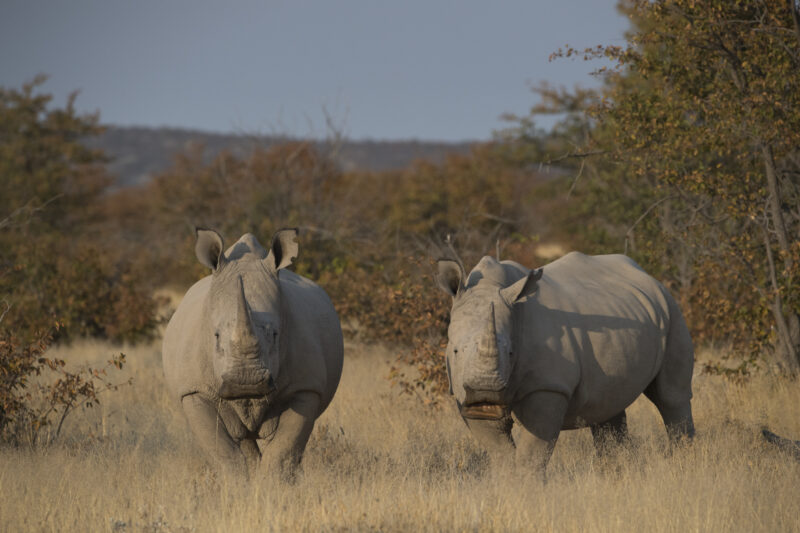
We drive on because Willy is still not satisfied. Suddenly he sees a large group of white rhinos in the distance. There are at least 10 to 12 of them. We drive quickly towards them and Willy jumps out of the jeep. He tells us to follow him in a single line and not to step on any dry vegetation. We continue to follow the rhinos on foot until something startles them and they take off. The massive animals take off with a huge thump and quickly reach high speed. We stay where we are until three more white rhinos arrive. They are eating grass undisturbed but suddenly become frightened by the sound of a small plane. They come straight at us and change direction only 15 meters from us. We happily walk back to the jeep and set course for the lodge.
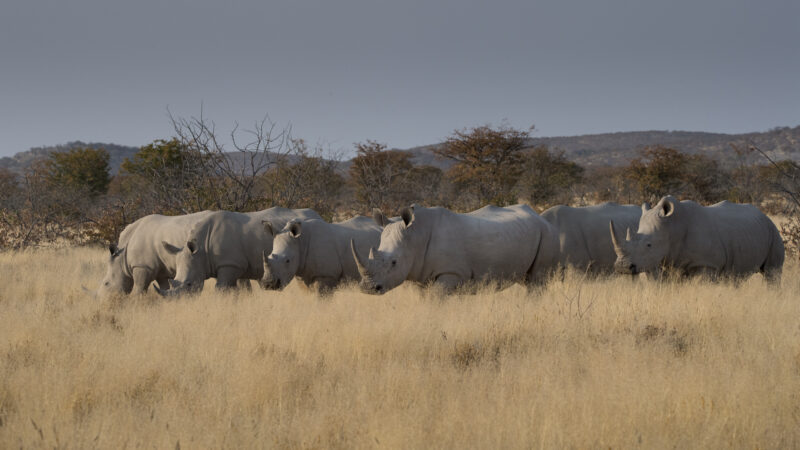
Poachers, the rhino's biggest enemy
The white rhino and the black rhino are both threatened with extinction. Both species have been successfully reintroduced in the Ongava Private Game Reserve where they are fully protected. This is not the case in Etosha National Park. Poaching will remain an acute problem as long as there is a demand for rhino horns. In Etosha, poaching is fought mainly from the air. The anti-poaching unit identifies rhinos in the park and constantly searches for poachers from a one-man plane.
In the past, the government believed that if the horns were removed from the animals, poaching would stop. They forgot that some of the horn tissue always remains on the rhino's head. The horns are so valuable on the black market in China that even a small amount of horn tissue makes it worth killing the animals. In addition, de-horning deprives rhinos of their defense mechanism to attack poachers. Over time, the government realized that both de-horning and chemically tinting the horns made no sense. The best approach remains a strict enforcement policy to catch as many poachers as possible. Protecting the animals and allowing them to defend themselves is still the best way out. Recently 2 poachers were attacked and killed by rhinos.
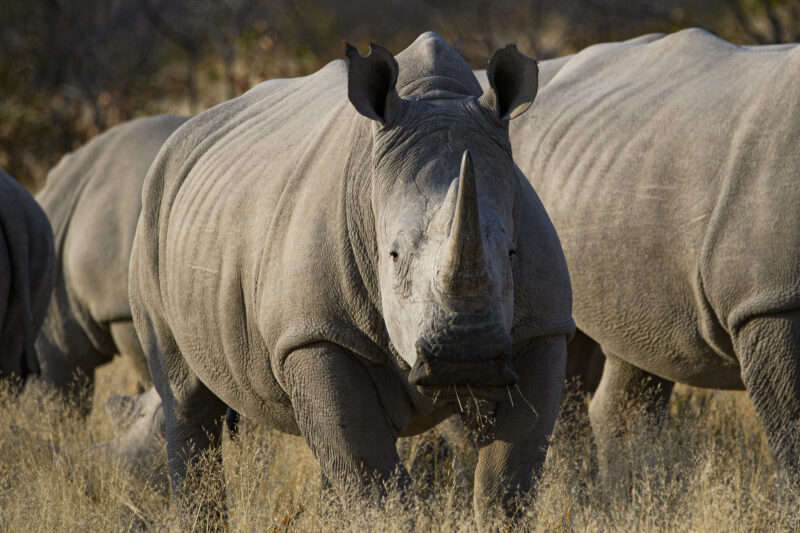
Lion tracking
Willy has finally spotted lion tracks. The jeep stops suddenly and a few meters away two lions and two lionesses are sitting in the grass. The animals are relatively young, but still very impressive. Their fur shines in the early morning light. They watch us without much interest. One of them stands up and comes within two meters of the open jeep. My breath stops. The other lions follow. They, too, look at us for a moment and then continue on their way. My heart and breathing return to normal.

We continue on our way and a hundred meters further on there are six more lions at a waterhole. Among them are two playful cubs about a year old. They bite each other and give each other a nudge or a crunch in the paw. The lions do not sit still for long. After about ten minutes, there is no trace of the eleven lions we just saw.
